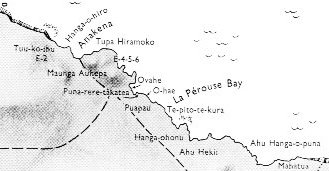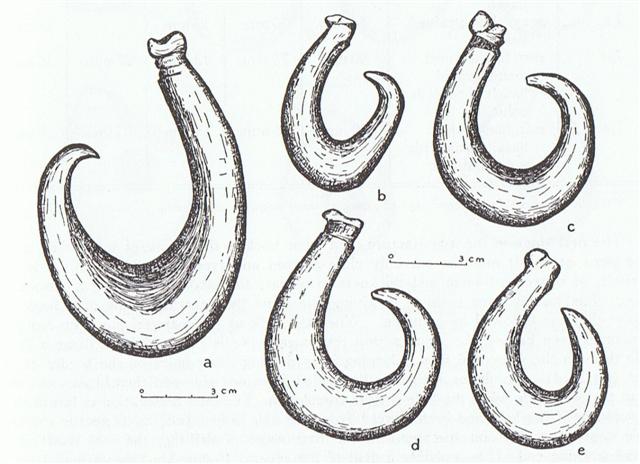Maybe there was a loophole in the fence where once upon a time the Goat Escaped, or maybe he simply was pelted away (Scape Goat):
Koro. 1. Father (seems to be an older word than matu'a tamâroa). 2. Feast, festival; this is the generic term for feasts featuring songs and banquetting; koro hakaopo, feast where men and women danced. 3. When (also: ana koro); ana koro oho au ki Anakena, when I go to Anakena; in case, koro haga e îa, in case he wants it. Vanaga. If. Korokoro, To clack the tongue (kurukuru). Churchill. Ma.: aokoro, pukoro, a halo around the moon. Vi.: virikoro, a circle around the moon. There is a complete accord from Efaté through Viti to Polynesia in the main use of this stem and in the particular use which is set to itself apart. In Efaté koro answers equally well for fence and for halo. In the marked advance which characterizes social life in Viti and among the Maori the need has been felt of qualifying koro in some distinctive manner when its reference is celestial. In Viti virimbai has the meaning of putting up a fence (mbai fence); viri does not appear independently in this use, but it is undoubtedly homogenetic with Samoan vili, which has a basic meaning of going around; virikoro then signifies the ring-fence-that-goes-around, sc. the moon. In the Maori, aokoro is the cloud-fence. Churchill 2. ... The tradition preserved by Hyginus in his Poetic Astronomy that the constellation Capricorn ('He-goat') was Zeus's foster-brother Aegipan, the Kid of the Goat Amalthea whose horn Zeus also placed among the stars, shows that Zeus was born at mid-winter when the Sun entered the house of Capricorn. The date is confirmed by the alternative version of the myth, that he was suckled by a sow - evidently the one on whose back he yearly rode into Dicte - since in Egypt swine's flesh and milk were permitted food only at the mid-winter festival ...
Pan was at the summer solstice and Aegipan was at the opposite solstice. ... The next riddle I had to solve, a combination of lines 9 and 26, was 'I have been in the firmanent, on the Galaxy'. The Galaxy, or Milky Way, is said to have been formed when the milk of the Great Goddess Rhea of Crete spouted abundantly into the sky after the birth of the infant Zeus. But since the Great Goddess's name varies from mythographer to mythographer - Hyginus, for example, debates whether to call her Juno or Ops (Wealth) - Gwion has considerately given us another clue: 'When Roma was built'.
He is correctly identifying a Cretan with a Roman goddess, and what is more surprising, recognizes Romulus as a Latin deity of the same religious system as Cretan Zeus. Romulus's mother was also named Rhea, and if she had trouble with her milk when she was forced to wean her twins in order to conceal their birth, so had Cretan Rhea in the same circumstances. The main difference was that Romulus and Remus had a she-wolf for their foster-mother, whereas Zeus (and some say his foster-brother Goat Pan, too), was suckled by the she-goat Amalthea, whose hide he afterwards wore as a coat; or, as still others say, by a white sow.
Both Romulus and Zeus were brought up by shepherds. So: 'I have been in the firmanent, on the Galaxy, when Roma was built'. The answer is Rhea, though it was not Rhea herself but the spurt of her milk, rhea in Greek, that was on the Galaxy ...
... In classical mythology, Syrinx (Greek Συριγξ) was a nymph and a follower of Artemis, known for her chastity. Pursued by the amorous Greek god Pan, she ran to a river's edge and asked for assistance from the river nymphs. In answer, she was transformed into hollow water reeds that made a haunting sound when the god's frustrated breath blew across them. Pan cut the reeds to fashion the first set of pan pipes, which were thenceforth known as syrinx ...
... The father of Aemilianus the orator, to whom some of you have listened, was Epitherses, who lived in our town and was my teacher in grammar. He said that once upon a time in making a voyage to Italy he embarked on a ship carrying freight and many passangers. It was already evening when, near the Echinades Islands, the wind dropped and the ship drifted near Paxi. Almost everybody was awake, and a good many had not finished theire after-dinner wine. Suddenly, from the island of Paxi was heard the voice of someone loudly calling Thamus, so that all were amazed. Thamus was an Egyptian pilot, not known by name to many on board. Twice he was called and made no reply, but the third time he answered; and the caller, raising his voice, said, 'When you come opposite to Palodes, announce that Great Pan is dead.' On hearing this, all, said Epitherses, were astounded and reasoned among themselves whether it were better to carry out the order or to refuse to meddle and let the matter go. Under the circumstances Thamus made up his mind that if there should be a breeze, he would sail past and keep quiet, but with no wind and a smooth sea about the place he would announce what he had heard. So, when he came opposite Palodes, and there was neither wind nor wave, Thamus from the stern, looking toward the land, said the words as he heard them: 'Great Pan is dead'. Even before he had finished there was a great cry of lamentation, not of one person, but of many, mingled with exclamations of amazement. As many persons were on the vessel, the story was soon spread abroad in Rome, and Thamus was sent for by Tiberius Caesar. Tiberius became so convinced of the truth of the story that he caused an inquiry and investigation to be made about Pan; and the scholars, who were numerous at his court, conjectured that he was the son born of Hermes and Penelope ... According to my assumed epoch for the rongorongo texts the star Gredi (α Capricorni) culminated (at 21h) in September 9:
As we can see this indicates a correspondence between the dates at the time of the Bull and the culminations at 21h at the time of rongorongo. I.e., when the star of the Goat culminated in September 9 the Sun would nowadays rise together with the right ascension line at *172 (= *108 + *64). To this place the empty Crater dish had been pushed in the Sun calendar. We could then count half a year ahead: JULY 7 (*108) + *183 = *291 (January 6) = *227 + *64. ... Space and time are a single, related concept in Runasimi [the language of the Inca people], represented by one word, pacha, which can also mean 'world' and 'universe'. The image of time familiar to Waman Puma was static and spatial: one could travel in time as one travels over earth - the structure, the geography, remaining unchanged ... The method to walk in time was simple, you took the Sun calendar and walked ahead the number of days caused by the precession.
However, I have not listed any star culmination for January 6. Remarkably 225 - here the distance between heliacal date and culmination date - stood still in January-February:
My last listed star above - in this Stag-nant Watery period - was Castor (α Gemini).
... This [σ Sagittarii] has been identified with Nunki of the Euphratean Tablet of the Thirty Stars, the Star of the Proclamation of the Sea, this Sea being the quarter occupied by Aquarius, Capricornus, Delphinus, Pisces, and Pisces Australis. It is the same space in the sky that Aratos designated as Water ... ... In China, with Capricornus, Pisces, and a part of Sagittarius, it [Aquarius] constituted the early Serpent, or Turtle, Tien Yuen; and later was known as Hiuen Ying, the Dark Warrior and Hero, or Darkly Flourishing One, the Hiuen Wu, or Hiuen Heaou, of the Han dynasty, which Dupuis gave as Hiven Mao. It was a symbol of the emperor Tchoun Hin, in whose reign was a great deluge; but after the Jesuits came in it became Paou Ping, the Precious Vase. It contained three of the sieu, and headed the list of zodiac signs as the Rat, which in the far East was the ideograph for 'water', and still so remains in the almanacs of Central Asia, Cochin China, and Japan ...
Kiore. Rat. Vanaga. Rat, mouse; kiore hiva, rabbit. P Pau., Mgv.: kiore, rat, mouse. Mq.: kioē, íoé, id. Ta.: iore, id. Churchill. Who once upon a time had culminated at the DECEMBER solstice, but who nowadays had been pushed ahead in the Sun calendar to the end station named Terminalia (February 23). 365 - 300 = 65 = 11 + 54:
... 13. Penelope, offering to marry any one of those present who could draw the powerful bow of her spouse, set up a target of twelve axes to be pierced. None of the suitors could even string the bow. Several tried manfully. The recently come beggar then offered and was mocked. However, as we read: He already was handling the bow, turning it every way about, and proving it on this side and that, lest the worms might have eaten the horns when the lord of the bow was away... And Odysseus of many counsels had lifted the great bow and viewed it on every side, and even as when a man that is skilled in the lyre and in minstralsy, easily stretches a cordabout a new peg, after tying at either end the twisted sheep-gut, even so Odysseus straightway bent the great bow, all without effort, and took it in his right hand and proved the bowstring, which rang sweetly at the touch, in tone like a swallow. Then great grief came upon the wooers, and the color of their countenance was changed, and Zeus thundered loud showing forth his tokens. And the steadfast goodly Odysseus was glad thereat, in that the son of deep-counselling Cronus had sent him a sign. Then he caught up a swift arrow which lay by his table, bare, but the other shafts were stored within the hollow quiver, those whereof the Achaeans were soon to taste. He took and laid it on the bridge of the bow, and held the notch and drew the string, even from the settle whereupon he sat, and with straight aim shot the shaft and missed not one of the axes, beginning from the first ax-handle, and the bronze-weighted shaft passed clean through and out at the last. The solar hero having thus demonstrated his passage of the twelve signs and his lordship of the palace, he proceeded masterfully to the shooting down of the suitors. 'And they writhed with their feet for a little space, but for no long while.' ... Teke went away and came to the house of Maeha [he tuu ki te hare o Maeha]. There he lay down (?) as though he were going to sleep that night. It grew dark [he po], and fifty men came to dig up the yams [ki te uhi keri]. They arrived [he tuu), dug out [he keri] the yam roots, and rubbed small pieces of them between their hands.
Maeha heard something, namely the noise that the men made, and he said [he-ki mai mai te rua painga] from the other side (of the house) to Teke, 'Hey you! This is the first time that such a noise has been heard at night.' [he ki mai a Teke] Teke answered from his side (of the house) [mai toona painga], 'My feet have made the noise that you heard.' [he vae ooku tau hetu ena.a koe hakarongo ena] And he very carefully [koro iti] made a noise [hakahetu] with his feet [i toona vae] ... [E:59] After which, 'Thy bed verily shall be ready,' said the wisely wifely Penelope. 'Come tell me of thine ordeal. For methinks the day will come when I must learn it, and timely knowledge is no hurt' ... In Gb2-20 we can see how the dark time was reaching to its end - like one of the feather garlands pounded into the ground by Nuku Kehu. ... The name of the residence (maara noho) of the king, of Hotu, was Oromanga.
... The war god Oro ... was worshipped all over Polynesia, but in Tahiti not represented by a carved human figure. Instead he was a bundle tied up with cords over a wooden core; limbs and facial features can, however, be recognized. Pleated sinnet on wood, Tahiti ... Maga. Branch (of tree). Magahaiga, part of the arm near the armpit, armpit. Magamaga: 1. Finger (rima matu'a neanea, thumb; tuhi henua, index finger; roaroa tahaga, middle finger; tuhia háûa, ring finger; komaniri-komanara, little finger). 2. Seaweed (shaped like small fingers). Vanaga. 1. (mama 2) A mouthful; maga nuinui, to gobble. 2. Garbage. 3. Index finger. 4. A branch; magamiro, a branch, a limb; magamaga, fork, finger, claw, rod; magamaga miro, a branch, a limb; magamaga rima, finger; magamaga vae, toe; magamaga tumu, great toe; hakamaga, a roof; magaga, fork; magatuhi, index finger; hakamagaturu, slope of a roof. Churchill. The name of the place where the roof of the house had been covered [hidden, kona] by Nuku Kehu was Hare Topa (sic!) Tuu. Nuku Kehu was also in charge of the feather garlands (maro), which served to mark the boundaries of the royal residence. He had pounded (the staffs with the feather garlands) into the ground [he maro tokoa te mee.a Nuku Kehu.i tuki.mai]. The middle (te tini) was located in front of the bay of Hanga Rau [te tini o mua i te hanga.o hanga rau]. The feather garlands went up, continued, and reached Puku Parari [i iri ai te maro.i oho.ai.he tuu ki puku parari]. They went up again and reached Puku O Heha [he iri hokoou he tuu.ki puku o heha]. From Puku O Heha they formed (a line) to the side, to Aro Huri [i hakataha hokoou ai ka aro huri]. From Aro Huri they turned again toward the sea [i hoki hokoou ai.a tai] and reached Maunga Koua [he tuu ki maunga koua], went down, went their way, and reached Hira Moko [he turu he oho.he tuu ki hira moko]. (He) made a second line (? he rua taupa) of feather garlands ... [E:91]
This should make us remember the glyph Bb12-35:
496 - 324 = 172 and 275 - 172 = 103: ... The method to walk in time was simple, you took the Sun calendar and walked ahead the number of days caused by the precession ... ... For the Maori the past is an important and pervasive dimension of the present and future. Often referred to as the 'ever-present now', Maori social reality is perceived as though looking back in time from the past to the present. The Maori word for 'the front of' is mua and this is used as a term to describe the past, that is, Nga wa o mua or the time in front of us. Likewise, the word for the back is muri which is a term that is used for the future. Thus the past is in front of us, it is known; the future is behind us, unknown. The point of this is that our ancestors always had their backs to the future with their eyes firmly on the past. Our past is not conceived as something long ago and done with, known only as an historical fact with no contemporary relevance or meaning. In the words of a respected Maori elder: The present is a combination of the ancestors and 'their living faces' or genetic inheritors, that is the present generations. Our past is as much the face of our present and future. They live in us ... we live in them ...
Time was running out (*339) and new sand for the hour-glass
had to be drawn up from the bottom of the sea (*64 = *339 - *275); from nadir to be brought up to zenith, from Alhena to the top of the mountain at Gredi.
|
|||||||||||||||||||||||||||||||||||||||||||||||||||||||||||||||||||||||||||||||||||||||||||||||||||||||||||||||||||||||||||||||||||||||||||||||||||||||||||||||||||||||||||||||||||||||||||||||||||||||||||||||||||||||||||||||||||||||||||||||||||||||||||||||||||||||||||||||||||||||||||||||
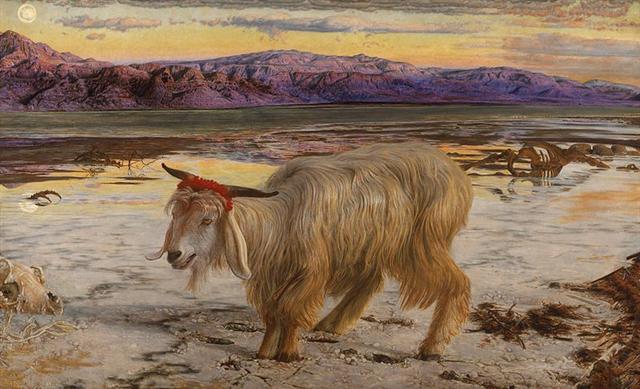

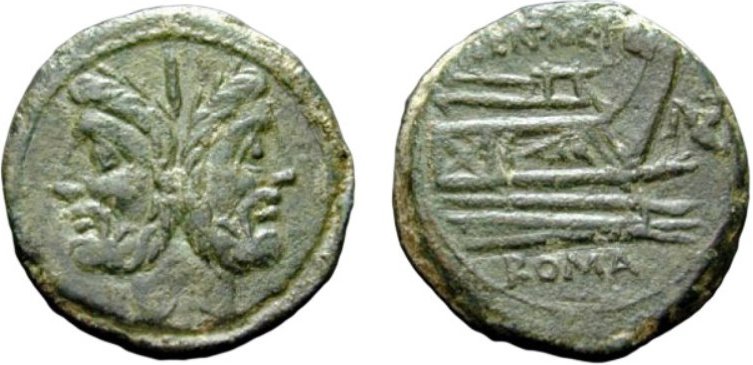
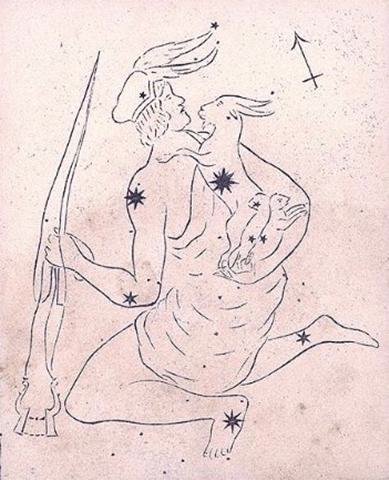


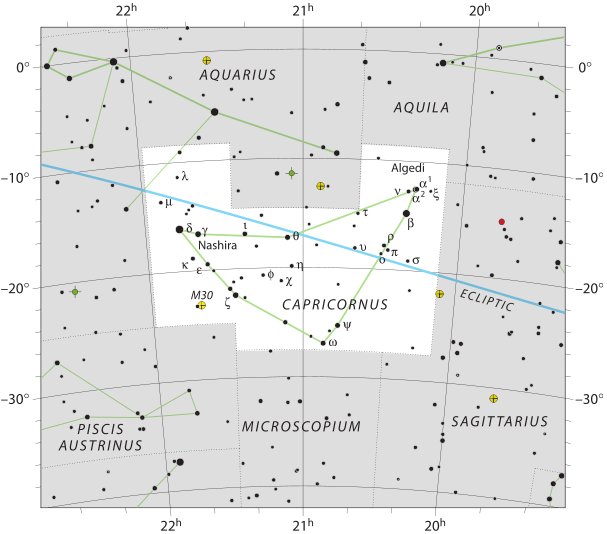

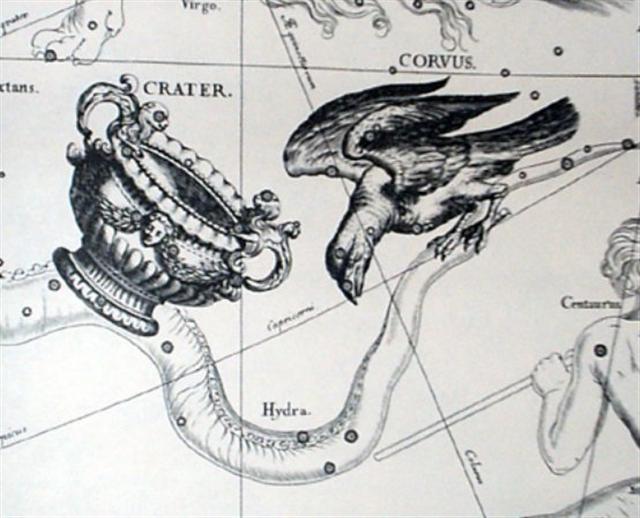







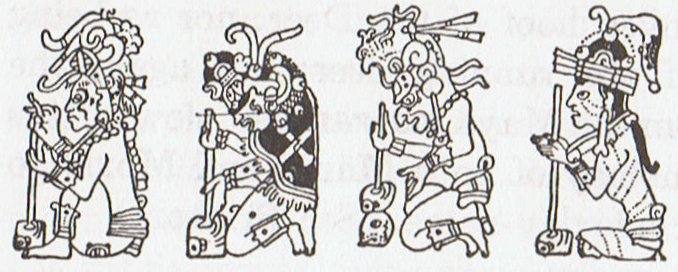
.jpg)
